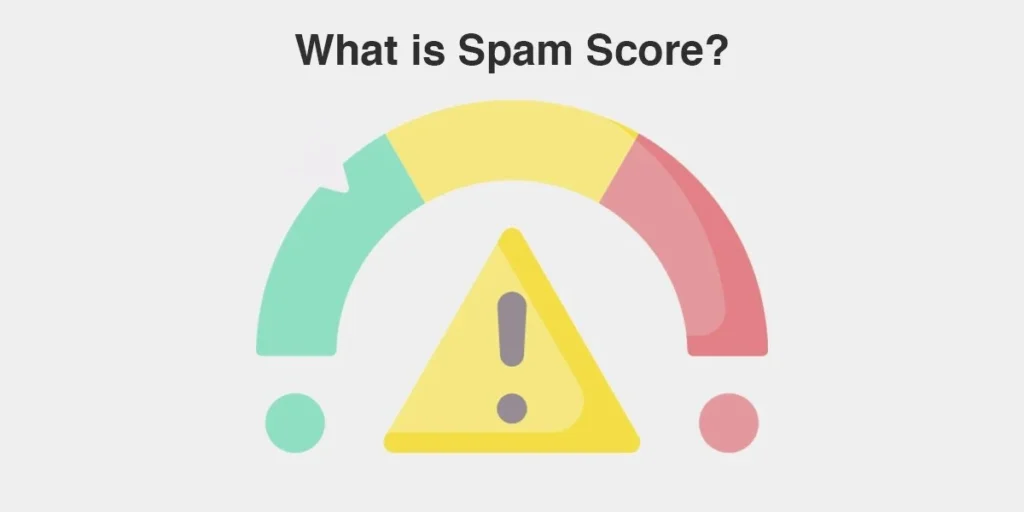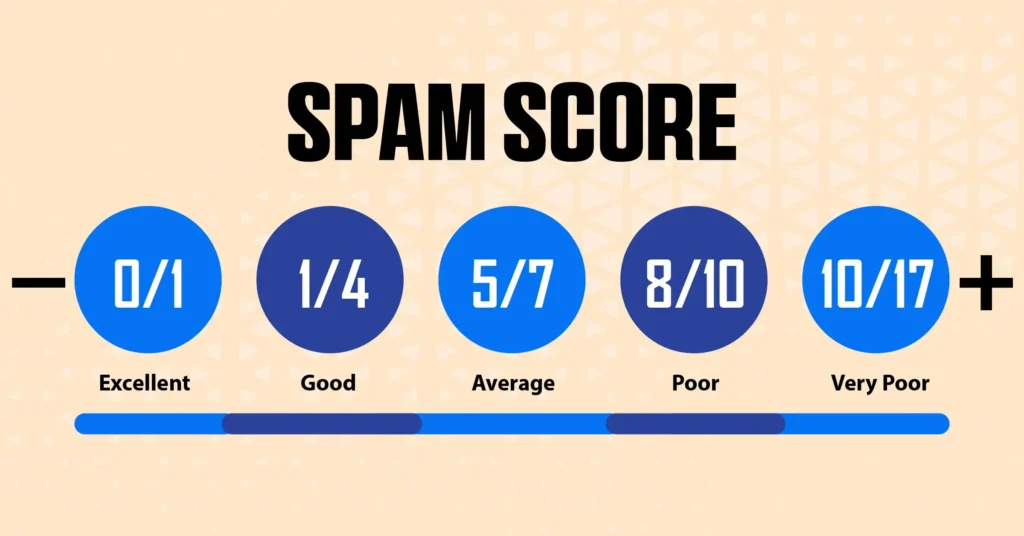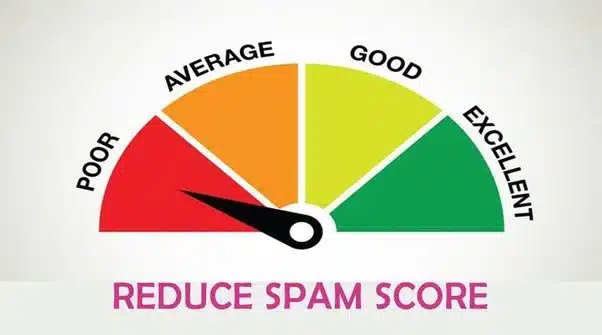Dive into the world of website security and spam mitigation as we unveil actionable strategies in our definitive guide, which will show you exactly how to reduce spam score of website effectively.
In the busy internet environment, where every website wants to be seen and taken seriously, spam is always there to threaten.
Website spam, which can range from comments that look like they aren’t harmful but are full of wrong links, is a significant threat to your online presence and the trust of your audience. Welcome to our complete guide to website spam.
Our guide is designed to equip you with a comprehensive understanding of website spam. We’ll delve into its various forms, explain their implications, and most importantly, provide you with the necessary tools to fortify your digital presence.
Come with us as we learn about the ins and outs of spam score, determine how it affects your online activities, and give you helpful information to protect your website from the never-ending flow of digital trash.
Prepare yourself because we are about to go on a quest to tame the wilds of the internet and protect your online domain.
Table of Contents
ToggleWhat is Spam Score?

Basically, a spam score is a number that tells you how likely it is that search engines will punish or flag a website as spam. It’s a number that shows how likely it is that a site is to do spammy things like using low-quality backlinks, hosting malicious content, or using dishonest methods to trick search engines into putting it higher.
You can think of it as a warning sign that search engines like Google use to figure out how trustworthy and real a website is. If you get a high spam score, your site is more likely to be buried deep in search engine results.
So, knowing your website’s spam score and handling it well is important for keeping its integrity and visibility online.
Types of Website Spam
There are different kinds of website spam, and each one is a different threat to the safety and purity of your online platform.
One common type is comment spam, in which bad people flood your blog posts or boards with comments that aren’t relevant or are misleading and contain links to sketchy websites.
Then there’s email spam, which is made up of unwanted messages that are full of phishing attempts, malware, and scams. There’s also link spam, which is when websites use tricks to make their backlink profiles look better than they really are.
Not to be forgotten is content junk, which is a lot of low-quality or copied content that is meant to trick both users and search engines.
Lastly, there is malicious spam, which includes a wide range of bad things like spreading malware, phishing attacks, and other cyber risks that try to get into your website through weak spots in its defenses.
Understanding these different types of website spam is important for taking focused steps to protect your online presence from these sneaky attacks.
Impact of High Spam Score
An excessive spam score can cause a chain reaction of bad things to happen in different areas of your online appearance.
First, your search engine ranks drop because search algorithms punish websites with high spam scores by pushing them to the bottom of search engine results pages (SERPs).
This drop in visibility hurts not only your organic traffic but also potential buyers’ trust in your brand.
Also, the user experience is severely damaged because people who see spammy content or harmful links are likely to leave the site quickly, leading to higher bounce rates and lower engagement measures.
A high spam score not only makes users less happy but also puts your website at risk of many security problems, such as malware infections, data breaches, phishing attacks, and other cyber threats.
It’s important to note that a high spam score has effects on more than just your SEO. These effects affect every part of your online business, making strategic strategies for reducing spam even more important.
Identifying Spam Signals
Finding spam signals in the huge world of computers is like figuring out small hints in a hard puzzle.
You can start to figure out what these signals mean by carefully looking at your website’s analytics numbers. Strange changes in traffic patterns, like sudden jumps or erratic changes, could mean that bots are visiting or that something fishy is going on that needs to be looked into further.
Also, using webmaster tools like Google Search Console can give you very useful information about possible security holes, human penalties, or indexing problems caused by spammy behavior.
It is also very important to do a thorough content quality analysis. Having duplicate, copied, or keyword-heavy content on your website not only hurts its trustworthiness but also makes search engines more likely to look closely at it.
Focusing on these key signs and carefully watching for deviations can help you actively eliminate spam signals and strengthen your website’s defenses against the rising tide of digital trash.
Is Spam Score A Google Ranking Factor?
The question of whether spam score has a direct effect on Google’s ranking system is a complicated one that goes to the heart of search engine optimization.
Moz’s spam score metric and Google’s algorithm work separately, but there are some connections and lessons to think about.
Google fights “bad” links, which come from spammy or low-quality sources, in a number of different ways and at different times.
Google is always improving its algorithm to better judge the quality and importance of backlinks. Sites that use dishonest link-building methods are punished by Google.
On the other hand, Moz’s spam score helps website owners and SEO experts figure out how likely it is that a site will be marked as spam by search engines.
It does this by looking at a number of factors, such as the quality of backlinks, the domain authority, and the quality of the content.
Moz’s spam score isn’t a straight ranking factor, but it does give you useful information about what you can do to make your website better and helps you make decisions that will make it more credible and trustworthy to both users and search engines.
Understanding the differences between Google’s algorithmic method and Moz’s spam score can help website owners come up with a comprehensive plan to improve online safety and reduce spam-related risks.
Spam Score Signals by Moz

Fewer Pages on A Website: Websites with a sparse page count may raise suspicions of low-quality content or a lack of substantial information, potentially contributing to a higher spam score.
Low-Level Domains: Domain names registered under less reputable or commonly used extensions (e.g., .biz, .info) may be perceived as less trustworthy by Moz’s spam score algorithm, possibly resulting in an increased spam score.
Domain Length: Longer domain names, particularly those containing multiple words or characters, may be indicative of less credible or legitimate websites, potentially leading to a higher spam score.
Domain Name With Numbers: Domain names featuring numbers may appear less professional or reputable, potentially signaling spam-like behavior and contributing to an elevated spam score.
Unavailability of Google Font API: Failure to utilize Google Font API may suggest a lack of attention to modern web development practices, potentially raising concerns about the website’s credibility and contributing to a higher spam score.
Absence of Google Tag Manager: Google Tag Manager offers valuable tracking and analytics capabilities, and its absence may indicate a less sophisticated or reliable website infrastructure, potentially leading to a higher spam score.
Double-click Tag: Similar to the absence of Google Tag Manager, the lack of a DoubleClick tag may signal a deficiency in tracking and advertising capabilities, potentially contributing to a higher spam score.
No Link LinkedIn: Omitting a LinkedIn link from a website may detract from its professional appearance and credibility, potentially leading to a higher spam score.
No Phone Number, Email Address, and Contact Information: Lack of contact information may raise suspicions about the legitimacy and trustworthiness of a website, potentially contributing to a higher spam score.
Missing HTTPS: Websites without HTTPS encryption may be perceived as less secure and trustworthy, potentially leading to a higher spam score due to security concerns.
Meta Keywords Tag: The presence of a meta keywords tag, which is largely deprecated in modern SEO practices, may signal outdated or spam-like optimization techniques, potentially contributing to a higher spam score.
Rel=Canonical Tags: Incorrect or misuse of rel=canonical tags may indicate poor website management practices or attempts to manipulate search engine rankings, potentially leading to a higher spam score.
Title Length: Excessively long or overly short titles may detract from the user experience and SEO performance, potentially contributing to a higher spam score.
Meta Descriptions Length: Similar to title length, meta descriptions that are too long or too short may signal poor optimization practices, potentially leading to a higher spam score.
Absence of Favicons: Favicons contribute to website branding and user experience, and their absence may detract from the site’s professionalism and credibility, potentially leading to a higher spam score.
Facebook Pixel: Failure to implement a Facebook pixel for tracking and retargeting purposes may indicate a lack of sophistication in marketing efforts, potentially contributing to a higher spam score.
Domain Link Ratio: Websites with an imbalance between internal and external links may be perceived as less authoritative or credible, potentially leading to a higher spam score.
External Links in Content: Overuse or misuse of external links within content may detract from the user experience and credibility of a website, potentially contributing to a higher spam score.
Vowels/Consonants Words in Domain Name: Domain names containing an unusual ratio of vowels to consonants may appear less professional or legitimate, potentially contributing to a higher spam score.
Domain Name with Hyphens: Domain names containing hyphens may be perceived as less credible or trustworthy, potentially leading to a higher spam score.
URL Length: Excessively long or complex URLs may detract from user experience and SEO performance, potentially contributing to a higher spam score.
Poison Words: The presence of certain “poison words” associated with spam or low-quality content may raise flags for Moz’s spam score algorithm, potentially leading to a higher score.
Low Number of Visitors: Websites with minimal traffic may be perceived as less credible or valuable, potentially contributing to a higher spam score.
High CPC Anchor Text: Anchor text with a high cost-per-click (CPC) value may signal attempts to manipulate search engine rankings for commercial gain, potentially contributing to a higher spam score.
Each of these signals contributes to the overall assessment of a website’s spam score by Moz, highlighting areas where improvements can be made to enhance credibility, user experience, and online security.
Strategies to How to Reduce Spam Score of Website

Implementing CAPTCHA Systems: Introducing CAPTCHA systems to your website’s forms and registration processes can effectively deter automated bots and spammers, ensuring that only genuine human users can interact with your site.
Utilizing Anti-Spam Plugins: Leveraging anti-spam plugins for platforms like WordPress can provide an additional layer of defense against comment spam and other forms of automated spam attacks.
Strengthening Content Moderation: Implementing robust content moderation practices, including manual review and approval processes for user-generated content, can help filter out spammy or inappropriate submissions before they reach your audience.
IP Blocking and Whitelisting: Utilizing IP blocking to restrict access from known spammy IP addresses and whitelisting trusted IPs can help mitigate the risk of spam infiltration.
Quality Content: Focusing on creating high-quality, valuable content that resonates with your audience can naturally attract genuine engagement and organic traffic while deterring spammers.
Link Quality: Prioritizing the acquisition of high-quality, relevant backlinks from reputable sources can enhance your website’s authority and credibility, reducing the likelihood of being associated with spammy link schemes.
On-Page Optimization: Adhering to best practices for on-page optimization, including optimizing meta tags, improving page load speed, and enhancing overall user experience, can contribute to a positive perception by both users and search engines.
User Experience: Prioritizing user experience by designing intuitive navigation, mobile responsiveness, and accessible content can encourage genuine user engagement while discouraging spammy behavior.
Social Signals: Actively engaging with your audience on social media platforms and building a strong social presence can foster trust and credibility, signaling to both users and search engines that your website is legitimate and authoritative.
Technical SEO: Implementing technical SEO best practices, such as optimizing site structure, fixing crawl errors, and improving site speed, can enhance your website’s visibility and reputation, reducing the likelihood of being flagged as spam.
Reconsider Advertising Placement: Carefully evaluating and optimizing the placement of ads on your website can enhance user experience and credibility, reducing the risk of inadvertently associating with spammy or low-quality advertisements.
Monitor Your Brand Mentions: Regularly monitoring mentions of your brand across the web can help identify and address instances of spam or misuse of your brand identity, safeguarding your reputation and credibility.
Regular Audits: Conducting regular audits of your website’s content, backlink profile, and security measures can help identify and address potential spam-related issues proactively.
Review Webmaster Guidelines: Familiarizing yourself with and adhering to search engine webmaster guidelines can help ensure that your website remains in compliance with best practices, reducing the risk of being penalized for spammy behavior.
Disavow Tool: Utilizing the Google Disavow Tool to disavow spammy or low-quality backlinks can help mitigate the impact of negative SEO tactics on your website’s spam score.
Enhancing Website Security Measures: Implementing robust security measures, such as SSL certificates for encrypted communication, regular software updates and patch management, and firewall and intrusion detection systems, can help safeguard your website against cyber threats and spam attacks.
Engaging with Legitimate Users: Implementing user registration systems, fostering genuine user engagement practices, and cultivating trustworthy community forums can help build a loyal and authentic user base while deterring spammy behavior.
Educating Website Visitors: Providing informative content on the dangers of spam, establishing clear user guidelines and policies, and offering easy-to-use reporting mechanisms for spam incidents can empower your audience to actively participate in spam prevention efforts.
Leveraging Email Authentication Techniques: Implementing SPF, DKIM, and DMARC protocols, along with robust email verification processes, can help authenticate your emails and prevent spoofing or phishing attempts, enhancing email security and trustworthiness.
Monitoring and Analysing Spam Patterns
Monitoring and analyzing spam patterns is a proactive approach to safeguarding your website against malicious activities and minimizing your spam score.
Conducting regular spam audits involves systematically reviewing various aspects of your website, including comment sections, contact forms, and user-generated content, to identify and address any signs of spam.
Additionally, trend analysis allows you to detect patterns or spikes in spam activity, enabling you to implement timely countermeasures and adjustments to your security protocols.
User feedback and reporting mechanisms play a crucial role in this process, as they provide valuable insights into emerging spam trends and suspicious activities reported by your audience.
By staying vigilant and responsive to these signals, you can effectively detect and mitigate spam patterns before they escalate, ensuring the integrity and security of your online presence.
Collaboration with Web Hosting Providers
Collaborating with reputable web hosting providers is a critical step in fortifying your website’s defenses against spam and enhancing overall online security.
When selecting hosting services, prioritize reliability, uptime guarantees, and robust security features to ensure a stable and secure hosting environment.
Additionally, coordinating spam prevention efforts with your hosting provider can yield significant benefits. Many hosting companies offer built-in spam filtering tools, security protocols, and monitoring services to help identify and mitigate spam-related threats effectively.
By working closely with your hosting provider, you can leverage their expertise and resources to implement proactive measures that safeguard your website against spam attacks, bolstering your online security posture and preserving your reputation in the digital landscape.
Legal Compliance and Spam Regulations
Making sure you follow all related rules and spam laws is the most important thing you can do to protect your website and keep your audience’s trust.
In order to follow the General Data Protection Regulation (GDPR), website owners must get clear permission from users before collecting, processing, or storing personal data.
They must also be open about how they handle data. Following GDPR and other privacy rules not only lowers the chance of getting fined a lot of money, but it also encourages openness and privacy for users.
The CAN-SPAM Act also sets rules for business emails, like making sure there are ways to stop receiving them, giving correct information about the sender, and making it clear when the email contains promotional content.
By following these anti-spam laws and rules, you show that you care about doing marketing in an honest way, protect your brand’s image, and lower the chance of facing legal consequences for breaking spam laws.
Conclusion
In conclusion, safeguarding your website against spam and ensuring online security is not just a task but a crucial responsibility in maintaining the integrity and trustworthiness of your digital presence.
Throughout this definitive guide, we’ve delved into the intricacies of spam scoring, explored various types of website spam, and dissected the far-reaching implications of a high spam score.
We’ve provided insights into identifying spam signals, debunked myths surrounding spam score as a Google ranking factor, and outlined actionable strategies to reduce your website’s spam score effectively.
From collaborating with web hosting providers to navigating legal compliance and spam regulations, every aspect of website security has been meticulously addressed.
As you embark on the journey of implementing these strategies, remember that safeguarding your website is an ongoing endeavor—a commitment to continuous monitoring, adaptation, and enhancement.
By prioritizing website security, you not only protect your digital assets but also uphold the trust and confidence of your audience.
Together, let’s fortify our online fortresses and ensure a safer, more secure digital landscape for all.
Thank you for taking the time to explore our definitive guide on safeguarding your website against spam and ensuring online security.
I hope the insights and strategies shared here have empowered you to take proactive steps towards protecting your digital assets. If you found this guide valuable, I encourage you to share it with others who may benefit from it.
Additionally, I’d love to hear your thoughts and opinions on the topic—feel free to leave a comment below with your feedback or questions.
Don’t forget to subscribe to our email newsletter to stay updated with our latest content and receive valuable insights directly in your inbox.
Thanks for reading the post!
Frequently Asked Questions
What is Moz Spam Score?
Moz Spam Score is a metric developed by Moz that quantifies the likelihood of a website being penalized or flagged as spam by search engines based on various factors such as backlink quality, domain authority, and content quality.
How do I remove spam links from my website?
To remove spam links from your website, you can manually review your backlink profile, identify spammy links, and reach out to the webmasters of the linking sites to request removal. Alternatively, you can disavow spammy links using Google's Disavow Tool.
What should be the spam score of a website?
Ideally, the spam score of a website should be as low as possible, preferably below 2%. However, the acceptable spam score threshold may vary depending on factors such as industry, niche, and competition.
How do I find spam links on my website?
You can find spam links on your website by using tools such as Google Search Console, Moz's Link Explorer, or third-party backlink analysis tools. These tools can help you identify and analyze the quality of backlinks pointing to your site.
What are the ways to reduce your spam score in Spam Assassin
To reduce your spam score in Spam Assassin, you can improve email content, avoid spam trigger words, use authentication techniques like SPF, DKIM, and DMARC, and maintain a clean email list.
What affects spam score?
Spam score is affected by various factors such as the quality of backlinks, domain authority, content quality, user engagement metrics, and adherence to spam regulations.
How does spam affect website performance?
Spam can negatively impact website performance by reducing search engine rankings, damaging reputation and credibility, increasing bounce rates, and compromising user experience.
Are there any free anti-spam solutions available?
Yes, there are several free anti-spam solutions available, including SpamAssassin, Akismet, and Google's reCAPTCHA. These solutions offer varying levels of protection against spam.
What steps can small businesses take to reduce spam?
Small businesses can reduce spam by implementing email authentication protocols, using anti-spam software, educating employees about spam risks, and maintaining a clean email list through regular list hygiene practices.
How Is The SPAM Score Determined?
The spam score is determined by analyzing various factors such as backlink quality, domain authority, content quality, user engagement metrics, and adherence to spam regulations.
How To Avoid Spam Sensitive Words & Phrases?
To avoid spam-sensitive words and phrases, avoid using overly promotional language, excessive use of capital letters or exclamation marks, and common spam trigger words such as "free," "discount," and "urgent."
How to Check the Spam Score?
You can check the spam score of a website using tools such as Moz's Link Explorer, SEMrush, or Ahrefs. These tools provide insights into the quality of backlinks and overall spam score.
How Does Moz Spam Score Work?
Moz Spam Score works by analyzing various factors such as backlink quality, domain authority, and content quality to quantify the likelihood of a website being penalized or flagged as spam by search engines.
What Impact Does Moz Spam Score Have on Ranking?
Moz Spam Score can indirectly impact ranking by influencing search engine algorithms' perception of a website's trustworthiness and credibility. Websites with higher spam scores may face challenges in ranking well in search engine results pages (SERPs).



 Twitter
Twitter Facebook
Facebook Linkedin
Linkedin





